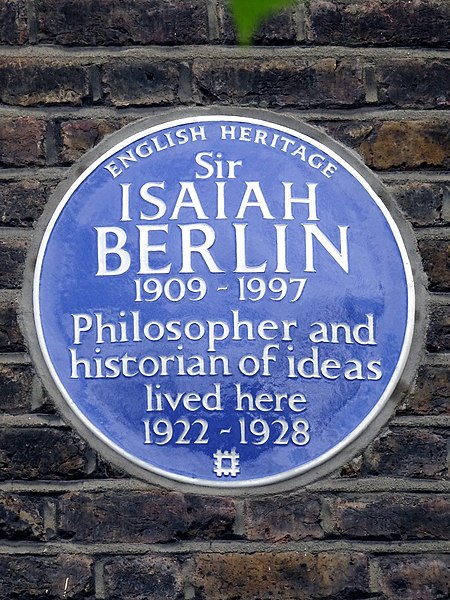Negative liberty is freedom from interference by other people. Negative liberty is primarily concerned with freedom from external restraint and contrasts with positive liberty. The distinction originated with Bentham, was popularized by T. H. Green and Guido De Ruggiero, and is now best known through Isaiah Berlin's 1958 lecture "Two Concepts of Liberty".
Torch of liberty from antiquity at the Istanbul Archaeology Museums
Sir Isaiah Berlin was a Russian-British social and political theorist, philosopher, and historian of ideas. Although he became increasingly averse to writing for publication, his improvised lectures and talks were sometimes recorded and transcribed, and many of his spoken words were converted into published essays and books, both by himself and by others, especially by his principal editor from 1974, Henry Hardy.
Berlin in 1983
Plaque marking what was once Berlin's childhood home (designed by Mikhail Eisenstein) in Riga, engraved in Latvian, English, and Hebrew with the tribute "The British philosopher Sir Isaiah Berlin lived in this house 1909–1915"
The Angliyskaya Embankment in Saint Petersburg, where Berlin lived as a child during the Russian Revolutions
English Heritage blue plaque at 33 Upper Addison Gardens, Holland Park, London





